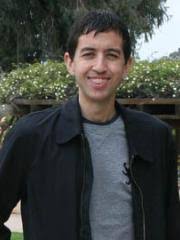TCBG Seminar
MD simulations, free-energy calculations, and machine learning applied to SARS-CoV-2 proteins. Tweet

PROFESSOR
JC Gumbart
School of Physics
Georgia Institute of Technology
Atlanta, Georgia
Monday, November 30, 2020
3:00 pm (CT)
Zoom webinar recording
Abstract
The SARS-CoV-2 virus is a strain of coronaviruses, named for the characteristic trimeric spike (S) glycoproteins that protrude from the viral membrane surface. The S proteins are type I fusion proteins, which upon recognition of ACE2, their host cell receptor, undergo substantial conformational change leading to membrane fusion and viral entry. Using molecular dynamics simulations, we have investigated several aspects for both the conformational landscape of the pre-fusion S protein as well as the receptor-binding process. Before binding, the receptor-binding domain on the S protein must first open to make the binding site accessible. We have carried out two-dimensional replica-exchange umbrella sampling to determine the minimum-free-energy pathway for this opening using NAMD on the nation’s largest supercomputer, Summit at Oak Ridge National Laboratory. Our simulations reveal, in particular, the role of S protein glycans in modulating the opening process. Next, machine learning applied to multiple microsecond-scale trajectories has allowed us to identify key residues that differentiate between SARS- CoV and SARS-CoV-2 S-protein binding to the receptor. Free-energy perturbation of selected residues further reveals the energetic contributions of individual mutations. Finally, we have also determined the contribution of the ACE2 receptor glycans to binding, illustrating why SARS-CoV-2 may bind more easily than SARS-CoV.



